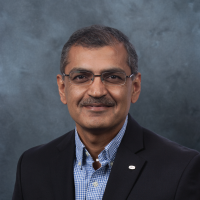
Muhammad Sarwar
Distinguished Global Solution Planner
Muhammad Sarwar is a Distinguished Global Solution Planner at Fujitsu Network Communications, where he is a key contributor to Fujitsu’s network solutions strategy, architecture and portfolio. He is responsible for strategic planning, product roadmaps and core architecture within the optical transport portfolio. He also specializes in new product incubation and strategic program management. He earned a Master of Science in Electrical Engineering from Columbia University in New York and is author of over ten U.S. patents related to data communications, optical transport, and network security.
Muhammad Sarwar
The benefits of closed-loop liquid cooling for optical networks With today’s hyperconnected lifestyle, data demand continues to escalate, further compounded by the rise of artificial intelligence (AI) across nearly every aspect of our daily lives. As the AI market heats up, so do the networks and data centers designed to support AI applications – literally.
Muhammad Sarwar
As the telecoms landscape continues to shift and evolve, communications service providers (CSPs) and other network operators face new imperatives. From the race to secure promising new revenue opportunities and increase capacity, to the urgent need to reduce costs and simplify operations, operators are seeking innovative new ways to deploy, manage, and optimize networks. Intelligent
Muhammad Sarwar
Sustainability features in optical networking Sustainability is built into Fujitsu’s DNA and the 1FINITY Ultra Optical System continues to raise the bar by achieving a 60% reduction in CO2 emissions across the network. It achieves this in the T900 by applying Fujitsu’s liquid cooling technology, the first time this has been done in optical networking
Muhammad Sarwar
Thanks to Moore’s Law – an empirical law dating from 1965 which states that the number of transistors in an integrated circuit doubles every two years – the latest generation of digital signal processors (DSP) for optical transport networks has received a significant performance boost. This increased processing power boosts optical performance in all key
Muhammad Sarwar
We are witnessing an explosion of data worldwide. This is due in large part to a confluence of trends, including the growth of cloud computing and AI applications, demand for Over-The-Top (OTT) services, and the proliferation of data from various Internet of Things (IoT) devices made possible by 5G adoption. Emerging use cases on the
Muhammad Sarwar
The ever-expanding demands of data center interconnect were never going to be easy to address. Data center operators facing constant pressure for better cost metrics in terms of bandwidth and rack space density know that when the chips are down, it’s all about economics of scale—or more accurately, scalability. With the new 1FINITY T600 optical
Muhammad Sarwar
Autonomous vehicles (let’s call them AVs) and Autonomous Networks (ANs) are road-mates; they’ve essentially traveled the same route in the quest for full automation. They share the overarching Holy Grail objective of zero-touch operation, undisturbed by human hand as they go about the full range of their respective operations. The Society of Automotive Engineers (SAE)